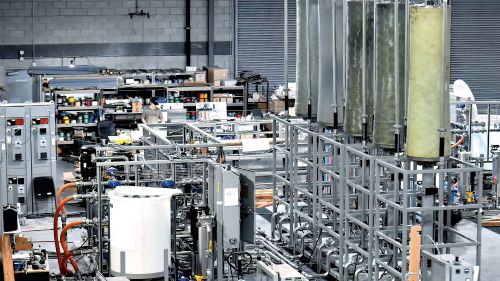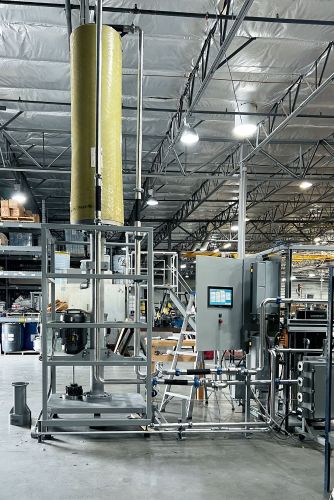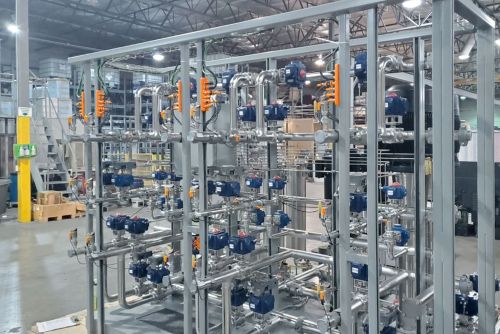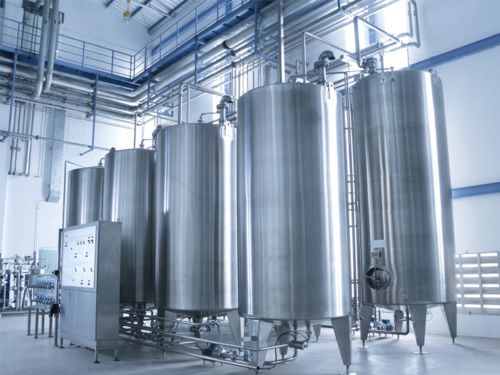- Skip to primary navigation
- Skip to main content
- Skip to primary sidebar
- Skip to secondary sidebar
- Skip to footer
- [email protected]
- +1-775-783-7600


VSEP Technology
New Logic Research, Inc. – Technology Introduction
While membrane-based separations of liquids from solids have enjoyed increasing popularity over the last 20 years, the technology has an inherent Achilles heel that affects all membrane devices: fouling. This long-term loss in throughput capacity is due primarily to the formation of a boundary layer that builds up naturally on the membranes surface during the filtration process. In addition to cutting down on the flux performance of the membrane, this boundary or gel layer acts as a secondary membrane reducing the native design selectivity of the membrane in use. This inability to handle the buildup of solids has also limited the use of membranes to low-solids feed streams.

Figure 1: Crossflow
To help minimize this boundary layer buildup, membrane designers have used a method known as tangential-flow or cross-flow filtration that relies on high velocity fluid flow pumped across the membranes surface as a means of reducing the boundary layer effect. ( See Figure 1 ) In this method, membrane elements are placed in a plate-and-frame, tubular, or spiral-wound cartridge assembly, through which the substance to be filtered (the feed stream), is pumped rapidly.
In cross-flow designs, it is not economic to create shear forces measuring more than 10-15 thousand inverse seconds, thus limiting the use of cross-flow to low-viscosity (watery) fluids. In addition, increased cross-flow velocities result in a significant pressure drop from the inlet (high pressure) to the outlet (lower pressure) end of the device, which leads to premature fouling of the membrane that creeps up the device until permeate rates drop to unacceptably low levels.

New Logic, however, has developed an alternative method for producing intense shear waves on the face of a membrane. The technique is called Vibratory Shear Enhanced Processing (VSEP). In a VSEP System, the feed slurry remains nearly stationary, moving in a leisurely, meandering flow between parallel membrane leaf elements. Shear cleaning action is created by vigorously vibrating the leaf elements in a direction tangent to the faces of the membranes. ( See Figure 4 )
The shear waves produced by the membrane’s vibration cause solids and foulants to be lifted off the membrane surface and remixed with the bulk material flowing through the membrane stack. This high shear processing exposes the membrane pores for maximum throughput that is typically between 3 and 10 times the throughput of conventional cross-flow systems. ( See Figure 2 , above)
The VSEP membrane filter pack consists of leaf elements arrayed as parallel discs and separated by gaskets. The disc stack resembles records on a record changer with membrane on each side.
The disk stack is oscillated above a torsion spring that moves the stack back and forth approximately 7/8 inches (2.22 centimeters). This motion is analogous to the agitator of a washing machine but occurs at a speed faster than that which can be perceived by the human eye. The oscillation produces a shear at the membrane surface of about 150,000 inverse seconds (equivalent to over 200 G’s of force), which is approximately ten times the shear rate of the best conventional cross-flow systems. More importantly, the shear in a VSEP System is focused at the membrane surface where it is cost effective and most useful in preventing fouling, while the bulk fluid between the membrane disks moves very little.

Because VSEP does not depend on feed flow induced shearing forces, the feed slurry can become extremely viscous and still be successfully dewatered. The concentrate is essentially extruded between the vibrating disc elements and exits the machine once it reaches the desired concentration level. Thus, VSEP Systems can be run in a single pass through the system, eliminating the need for costly working tanks, ancillary equipment and associated valving.
The disc pack holdup volume of a system with 1,400 ft2 (130 sq. meters) of membrane area, is less than 50 gallons (189 liters). As a result, product recovery in batch processes can be extremely high. Waste after draining the stack is less than 3 gallons (11 liters).
VSEP System Operation: At startup, the VSEP system is fed with a slurry and the concentrate valve is closed. Permeate is produced and suspended solids in the feed are collected inside the VSEP filter pack. After a programmed time interval, valve one is opened to release the accumulated concentrated solids. The valve is then closed to allow the concentration of additional feed material. This cycle repeats indefinitely.
Membrane selection is the single most important parameter that affects the quality of the separation. Other important parameters that affect system performance are pressure, temperature, vibration amplitude, and residence time. All of these elements are optimized during testing and entered into the programmable logic controller (PLC) which controls the system.
The operating pressure is created by the feed pump. VSEP machines can routinely operate at pressures as high as 1,000 psig (68.95 BAR). While higher pressures often produce increased permeate flow rates, they also use more energy. Therefore, an operating pressure is used that optimizes the balance between flow rates and energy consumption.
In most cases, the filtration rate can be further improved by increasing the operating temperature. The temperature limit on a standard VSEP system is 175° F (79°C), significantly higher than competitive membrane technology. Even higher temperature constructions are also available.
The vibration amplitude and corresponding shear rate can also be varied which directly affects filtration rates. Shearing is produced by the torsion oscillation of the filter stack. Typically the stack oscillates with an amplitude of 3/4 to 1 1/4 inches (1.9 to 3.2 cm) peak to peak displacement at the rim of the stack. The oscillation frequency is approximately 53 Hz and produces a shear intensity of about 150,000 inverse seconds.
Feed residence time is set by the frequency of the opening and closing of the exit valve (valve one). The solids level in the feed increases as the feed material remains in the machine. Occasionally, a cleaner is added to the membrane stack and continued oscillation helps clean the membrane in minutes. This process can be automated and only consumes approximately 50 gallons (189 liters) of cleaning solution thus reducing cleaner disposal problems inherent with other membrane systems.
Subscribe to our newsletter
- IIoT & Solutions
- Supply Chain
Filtering water permanently and more efficiently

New Logic Research relies on vibration and ifm for its VSEP technology
Filtration is the simplest way to separate solids from a liquid. Basically, all you need is a filter – usually a membrane in the industrial sector – and pressure to press the mixture onto the membrane surface. The size of the pores in the membrane determines which solids in the liquid are retained by the membrane. The problem: Over time, these solids foul and plug the pores, thus preventing any liquid from passing. It is then high time to replace the membrane.
Vibration prevents membrane fouling
The founders of New Logic Research also realised that this is sometimes quite an expensive undertaking. With Vibratory Shear Enhanced Processing (VSEP), they offer a filtration technique that, according to the company, significantly increases the service life of the membrane and also allows up to ten times higher filtration rates.
Chip Johnson, COO of New Logic Research, explains: “As the name suggests, we use vibration, which is specifically applied to the membrane, during the filtration process. This helps to keep the membrane surface cleaner and ensures the cycles between cleaning or replacing a membrane are significantly longer than those of competing filtration techniques. At the same time, we achieve an extremely high level of throughput with less power consumption.”

Because ifm offers a wide range of sensors that we can actually use, the company is our first choice in these cases
About New Logic Research
New Logic Research manufactures and distributes water filtration systems based on Vibratory Shear Enhanced Processing (VSEP) technology. This combines high system availability and high filtration rates with low energy consumption.
- Application report: New Logic Research – Efficient construction and operation of filtration systems (945 KB)
All relevant values of the system at a glance
To ensure the filtration process runs as efficiently as possible, New Logic Research today relies on numerous ifm sensors to permanently monitor the parameters vibration, flow rate, pressure, temperature and the conductivity of the water as indicators of the filtration quality. “In the beginning, we supplied filtration systems without comprehensive sensor technology to our customers, who were then responsible for their operation. However, we soon realised that our system can only achieve the desired and expected efficiency and longevity if it is handled correctly, and that correct handling is intrinsically linked to specific know-how that we cannot always expect customers to have. That’s why we decided to offer filtration as a service,” says Chip Johnson.

Picture 1: Heart of the overall system: The filtration system together with the 20 hp motor that generates the vibratory action at the membrane.
Picture 2: More clarity in the control cabinet: Thanks to IO-Link, the number of incoming cables is reduced considerably.
Picture 3: The standard M12 connection ensures error-free wiring.
Automation creates maximum efficiency
Since changing the corporate approach, relevant values are now monitored by sensors – which provides a range of benefits for both customers and New Logic Research: “Thanks to full-scale automation and continuous monitoring of the filtration system, we’re always able to get a clear picture of a system’s condition for ourselves and our customers. This is how we prevent the expensive membranes from being excessively stressed. In most cases, we can perform the regular system checks remotely – saving us and our customers a lot of time and money, as our experts only have to be on site in case of an emergency,” says Johnson.

The IO-Link masters receive the data from the sensors in a decentralised manner and forward it as a bundled package. This reduces cable routes, saves time and eliminates sources of error.
Reliable sensor makes a lasting impression
The fact that New Logic Research relies primarily on ifm for monitoring and controlling its filtration systems has to do with Johnson’s initial experience with a pressure sensor from the automation specialist: “I don’t remember exactly when I first came into contact with ifm,” says Johnson. “What I do remember very clearly though is that the first pressure sensor I bought from ifm was simply indestructible. It ran and ran and ran – I wouldn’t be surprised if it’s still busy at work in some system somewhere. This level of reliability, this excellent price-performance ratio, quickly convinced all of us at New Logic Research. And because ifm offers a wide range of sensors that we can actually use, the company is our first choice in these cases.”
IO-Link infrastructure speeds up cabling
In addition to the sensor technology, New Logic Research also relies on ifm’s IO-Link portfolio.
Engineering Manager Matt Ayers describes the advantages of the system: “Thanks to the IO-Link masters and standard M12 cabling, we’ve been able to speed up the wiring of our filtration systems considerably. Instead of having to label hundreds of metres of cables, pulling them through the system to the central controller and making sure they’re all connected correctly, we can now connect the sensors to the masters in a decentralised manner. And thanks to the standard M12 connection, this is achieved without errors and without having to constantly think about what you’re doing. What took us a few weeks in the past, can now be implemented in just a few days. This provides a considerable time buffer, especially in the high-pressure phase shortly before delivery to our customers.”

Separating the precious from the valuable
Customers who rely on New Logic Research’s filtration systems include, for example, mine operators and manufacturers of catalytic converters for the automotive market. “The reasons why our customers turn to our systems are the same, no matter what industry they’re from. They want to separate water from valuable solids as efficiently as possible in order to use them either for the first time or again. Other customers use our systems to treat their industrial process water before returning it to the regular cycle. The more efficiently our customers achieve their goals, the more attractive our filtration method becomes. And the more water of sufficient quality is returned to the global cycle. So, in many cases we separate the precious from the valuable. As water is set to become the new oil; and the only thing that can be done today and in the future is to conserve as much of this increasingly rare resource as possible. And we want to contribute to this with our solutions.”
Conclusion
With the help of ifm’s reliable sensors, New Logic Research can offer its customers a holistic service consisting of efficient filtration and condition monitoring. And IO-Link takes efficiency to the next level by enabling automation. Thanks to fast, guaranteed error-free cabling.
Have you implemented an interesting application with hardware or software from ifm? How do our sensors help to optimise your process operations? Let us know! We will be happy to show your solution and present your know-how to a large audience free of charge, of course.

IO-Link technology - the future of automation
Digital interface unlocks data in sensors and transmits it to the controller, allowing operators to make adjustments with greater accuracy

Smart and easy wiring with IO-Link
OEM achieves cost and time savings of up to 60 % during set-up
We've detected unusual activity from your computer network
To continue, please click the box below to let us know you're not a robot.
Why did this happen?
Please make sure your browser supports JavaScript and cookies and that you are not blocking them from loading. For more information you can review our Terms of Service and Cookie Policy .
For inquiries related to this message please contact our support team and provide the reference ID below.
- Air & Climate
- Drinking Water
- Environmental Management
- Health & Safety
- Monitoring & Testing
- Soil & Groundwater
- Waste & Recycling
- Water & Wastewater
- Water Monitoring
- Water Pumping
- Air & Climate
- Acid Gas Emissions Control
- Activated Carbon Air Treatment
- Activated Carbon Gas Treatment
- Activated Carbon Treatment
- Activated Carbon VOC Treatment
- Aerobiology
- …and more
- Applications
- Atmospheric Water Generation
- Bottled Water
- Communal Water
- Developing Countries Water
- Domestic Drinking Water
- Acoustic Bird Control
- Air Modeling
- Air Quality Reporting
- Aquatic Waste Collectors
- Archaeology
- Asbestos Compliance
- Health & Safety
- Absorbent Polymers
- Accident Compliance
- Accident Monitoring
- Accident Regulations
- Accidental Release
- Acid Safety
- Monitoring & Testing
- 3D Measurement
- 3D Scanning
- Absorptiometers
- Absorption Monitoring
- Accelerometers
- Acetonitrile Monitoring
- Soil & Groundwater
- 3D Groundwater
- Acid Mine Drainage
- Airborne Geophysics
- Anaerobic Bioremediation
- Aquifer Characterization
- Aquifer Monitoring
- Waste & Recycling
- Acid Recycling
- Acoustic Cleaning
- Aerobic Biodegradation
- Aerobic Waste
- Aerosol Cans Disposal
- Water & Wastewater
- Acidic Wastewater Treatment
- Activated Carbon Filtration
- Activated Carbon Water Treatment
- Activated Sludge
- Activated Sludge Monitoring
- Air and Water Quality Monitoring
- Algae Bloom Monitoring
- Aquatic Monitoring
- Automatic Water Sampling
- Ballast Water Monitoring
- Axial Pumps
- Backwashing Pumps
- Balancing Valve
- Booster Pumps
- Cavity Pumps
- … and more
- Environmental XPRT Search
- List your business
- Email marketing

New Logic Research, Inc.
- Water and Wastewater
- Water Filtration and Separation
Headquartered in Emeryville, California, just across the Bay from San Francisco, New Logic is the leading provider of high-performance membrane filtration systems used in a wide variety of applications from pure water and wastewater treatment to chemical process clarifications. Founded in 1987, New Logic has grown to meet the needs of its ever-expanding customer base, which includes major corporations from around the World. Today, New Logic provides a breadth of products and services for pure water and wastewater treatment, industrial and chemical processing, power, pulp and paper, oil and gas production and processing, paint and pigments and electronics industries.
Company details
Find locations served , office locations and our distributors
Most popular related searches
- membrane separation
- reverse osmosis membrane system
- spiral reverse osmosis membrane
- wastewater treatment industry
- industrial wastewater treatment
- membrane filtration system
- reverse osmosis membrane
- membrane separation system
- wastewater treatment chemicals
- Placeholder
Industries Served
- Chemical & Pharmaceuticals
- Electronics and Computers
- Manufacturing, Other
- Oil, Gas & Refineries
- Pulp & Paper
- Water and Wastewater - Water Filtration and Separation

IMAGES